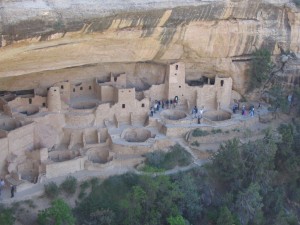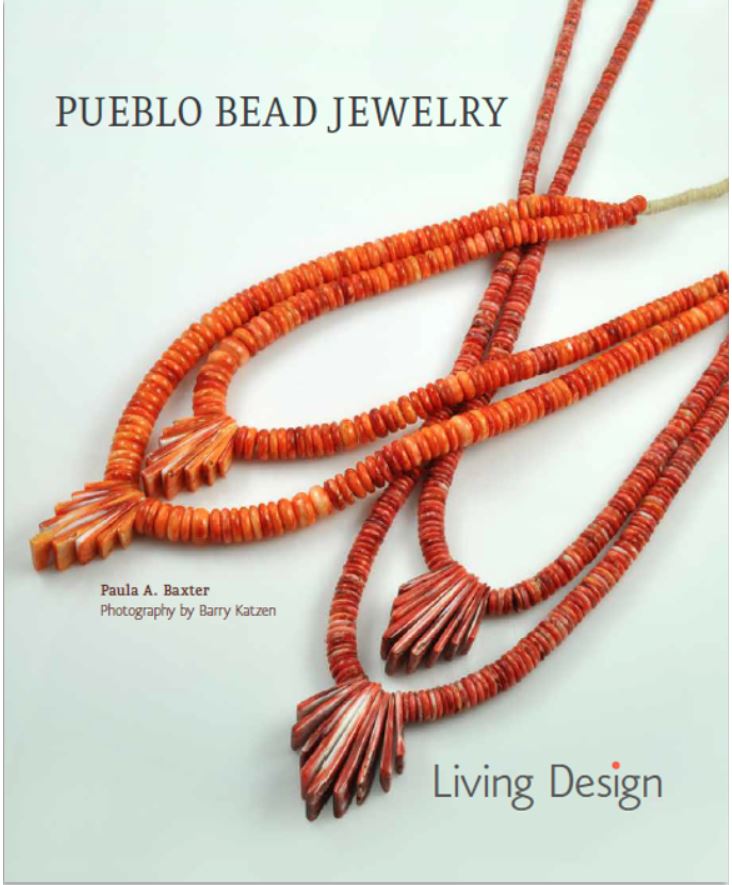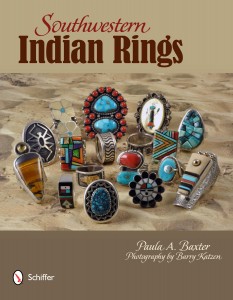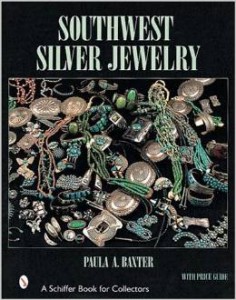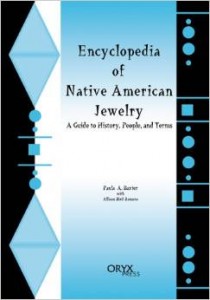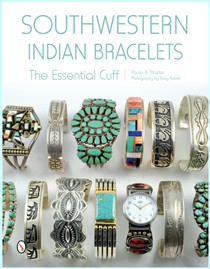I’ve been waiting to hear the buzz about the “Lone Ranger” movie from folks out in Indian Country. Magazines like Cowboys and Indians and Native Peoples have been politely neutral. I suspect the decision has been to appreciate that American Indians at least get some pop culture notice, and that Johnny Depp has been fairly respectful of Tonto, even going so far as to intimate he himself has some Native blood.
One tweet I saw recently said that Depp is talking with the Oglala Sioux about buying Wounded Knee, since that sacred site of heartbreak is up for sale in this oh-so business-like world we inhabit.
I wasn’t sure what to make of the movie when I saw it, but I decided I liked it, especially the ending scene which occurs after the closing credits start. (By then most of the handful of people in the theater had walked out, so they missed it.) If I said the movie was uneven, that would be a good judgment. The critics panned the movie and it hasn’t brought in the money Disney had hoped for, but I still wonder what Native America thinks about it…
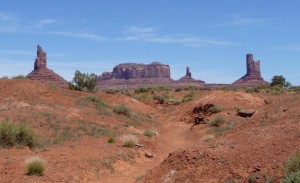 Monument Valley, where lots of “The Lone Ranger” was filmed.
Monument Valley, where lots of “The Lone Ranger” was filmed.
One of the lovely benefits the visitor to the Southwest gets, besides the usually sunny sky, is the fact that even if it rains you don’t need an umbrella. This is often hard to grasp for the newcomer. Most of us are so used to rains of all kinds, especially soakers and drenchers. Rain is valued in the Southwest for its essential life-giving effects. Native peoples will characterize this elemental watering as “male rains,” typically hard-driving showers, or “female rains,” which are softer drizzles. Regardless of which one encountered, even one accompanied by dramatic lightning and thunder, a person dries off from these with amazing ease.
When I first came back to the Southwest (after a few years spent in New Mexico in the early 1960s), I brought my umbrella. One day we drove into Bandelier National Monument to hike on the mesa level. I always put all my valuables into a day pack to take with me, and I stowed the empty tote bag and umbrella in the trunk (it was very sunny). This was good, for as we walked to the trail some guys in a pickup truck pulled into the nearly empty lot. Sure enough, when we got back, the rental car had been broken into and my tote bag and umbrella were gone. We called a ranger who came up to meet us. When I reported what was gone, he suggested that we troll around the other lots and we might find the tote bag, but probably not the umbrella. I didn’t remark on this as the time, but sure enough we discovered the bag discarded under some bushes, but never found the umbrella…
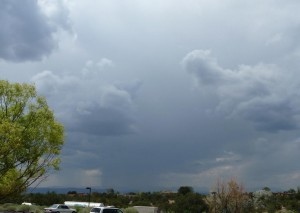 Rain arrives in monsoon season, seen from Museum Hill near Santa Fe, NM
Rain arrives in monsoon season, seen from Museum Hill near Santa Fe, NM
Cultural tourism has various expectations which aren’t always fulfilled. The Plaza outside the Palace of the Governors nowadays reflects the subtle changes that impact all Americans. Tourists still arrive in Indian Country with outdated ideas about Native life and arts. The Indians they find under the portals in Santa Fe may be as savvy as those who work in Lower Manhattan art galleries. On the other hand, there are still many conservative Pueblo artisans who rely on selling their crafts in a tourist setting. Courtesy and an open mind are needed these days.
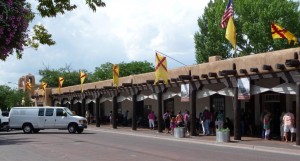 Palace of the Governors, Santa Fe, Palace of the Governors, the day before the crowds of Indian Market.
Palace of the Governors, Santa Fe, Palace of the Governors, the day before the crowds of Indian Market.
Concho belts as we know them — small to huge discs of silver shaped and stamped and made to link together — are becoming fairly rare adornment. Conchos made in the early decades of Southwestern Indian silversmithing are now immensely valuable objects. The best examples appear in museum displays or are hidden in bank vaults. A certain kind of fashionable concho belt shows up on Fashion Week runways and artsy fashion magazine spreads. An even more sketchy type lives in in contemporary western wear.
Indian arts dealers will tell you that these items, originally derived from Spanish and Mexican horse and bridle gear, are hard to sell. Forgeries do abound. Theories about this phenomenon also proliferate. The best concho belts are relatively heavy to wear. What everyone does agree, however, is that when someone models a genuine article that person has made an irrefutable fashion statement!
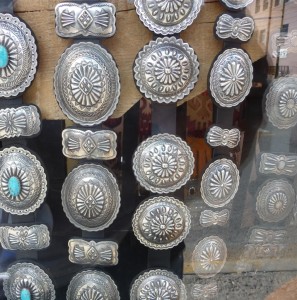 Window display of concho belts, Santa Fe.
Window display of concho belts, Santa Fe.
This Santa Fe institution is preparing for an expansion of its galleries in the next few years. I’ve learned that much of this new space will be devoted to showing Indian jewelry from the permanent collection. This offers those of us who love this art form some new educational opportunities. The Wheelwright has always been blessed with its Case Trading Post, one of the best venues for buying Native arts in Santa Fe. There have been new developments in recent years related to jewelry curio sources (this particular one aided by the museum’s director), hallmarks, production history, and scope of work. These new galleries may become a place with important teaching points.
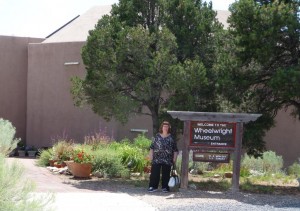 Standing outside the Wheelwright Museum, Santa FE, NM
Standing outside the Wheelwright Museum, Santa FE, NM
One of the most fascinating manifestations of contemporary Native art comes from young Indian artists who use manga, graphic displacement, and humor to showcase their street cred. Young—and older—Natives enjoy paralleling the urban disaffection of gangstas and hip-hop heroes. Their works show a wary distrust of non-Native sympathy for Indian “themes.” One young artist who lives in the Phoenix metro area laughs about how puzzled viewers want to know where the horses are in his work. The American Southwest has cities which have grown large urban areas around their centers. In the exhibit Low Rez, which ran in Santa Fe during summer 2012, humor poked fun at stereotypes and misconceptions about contemporary Indian urban life.
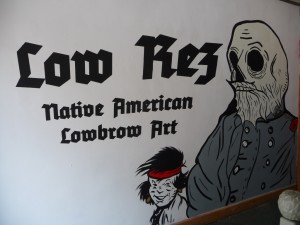 The Low Rez exhibit, Santa Fe, August 2012
The Low Rez exhibit, Santa Fe, August 2012
One of the most popular images, including for design, in Native art is that of the Apache Gan, or Mountain Spirit dancer. This whirling figure, with black face covering and towering headdress, is somehow enchanting and even endearing. Despite the awesome figure he makes, one senses the importance of his actions: to cure and protect. Apaches occupy an interesting space in the imaginations of tourists to the Southwest. There are reservations for different bands in Arizona and New Mexico; some areas have developed tourist attractions, while others haven’t. The outlaw nature of Cochise and Geronimo lives on in popular culture memory. When I talk to people who aren’t particularly knowledgeable about Native Americans, a mention of the Apaches usually evokes affection and respect. Intriguing, huh?
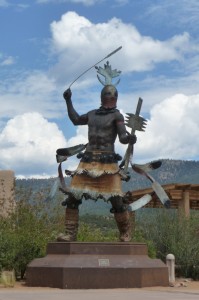 Apache Mountain Spirit Dancer statue (by Craig Dan Goseyun), Museum Hill, Santa Fe, NM
Apache Mountain Spirit Dancer statue (by Craig Dan Goseyun), Museum Hill, Santa Fe, NM
Page One lives on at its location on Montgomery Blvd. I remember the glory days when it had a sister Page Two shop, but most bookstores these days have become diminished operations. Even UNM’s large store off Central Avenue is not what it once was. Page One, however, provides new and used books, some collectibles, nice paper goods, and a welcoming sense of community. Furthermore, visitors to the region will find that its Local History and Native American book sections have wonderful titles for sale, including some remarkable out of print finds. While it’s located in a sleepy strip mall, don’t underrate this marvelous resource.
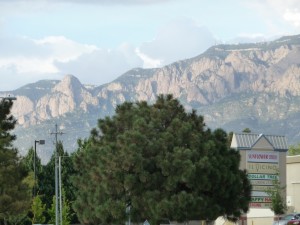 The stock inside Page one is impressive, and the view of the Sandias from the parking lot is pretty nice too.
The stock inside Page one is impressive, and the view of the Sandias from the parking lot is pretty nice too.
The remnants of the Route 66 tourist trade abound along I-40. Some of these remain kitchy and have an old-fashioned air. Others, like the streamlined Route 66 Diner, provide a chance to enjoy the past by embracing its comfort food. It’s interesting to look back and realize that the decades when Route 66 came to life in story and song where the 1950s and 1960s. These years were when the Indian reservations finally got electrification and state-funded high grade tarmac roads for the first time. The television, too, brought a window onto the greater world at large. I lived in Albuquerque briefly in the early 1960s. I visited Acoma and Santo Domingo and was struck by the matter-of-fact ease with which, to my childish eyes, Indians seemingly lived in two worlds at once. Growing up, I realize that analogy was too simplistic. Indians live in the world as any other ethnic peoples do, and their ability to enjoy urban pleasures is equal to anyone’s. Isn’t it time that non-Natives stop referring to Indians as living in two worlds? It’s one world—and still as imperfect as ever.
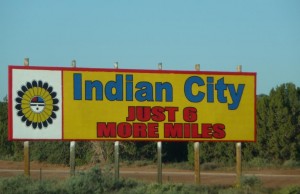 One of the many Indian curio spots on I-40 — a reminder of old Route 66.
One of the many Indian curio spots on I-40 — a reminder of old Route 66.
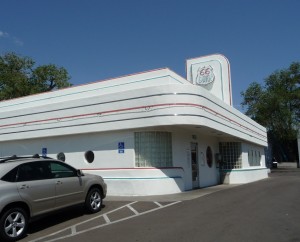 The Route 66 Diner in Albuquerque.
The Route 66 Diner in Albuquerque.
